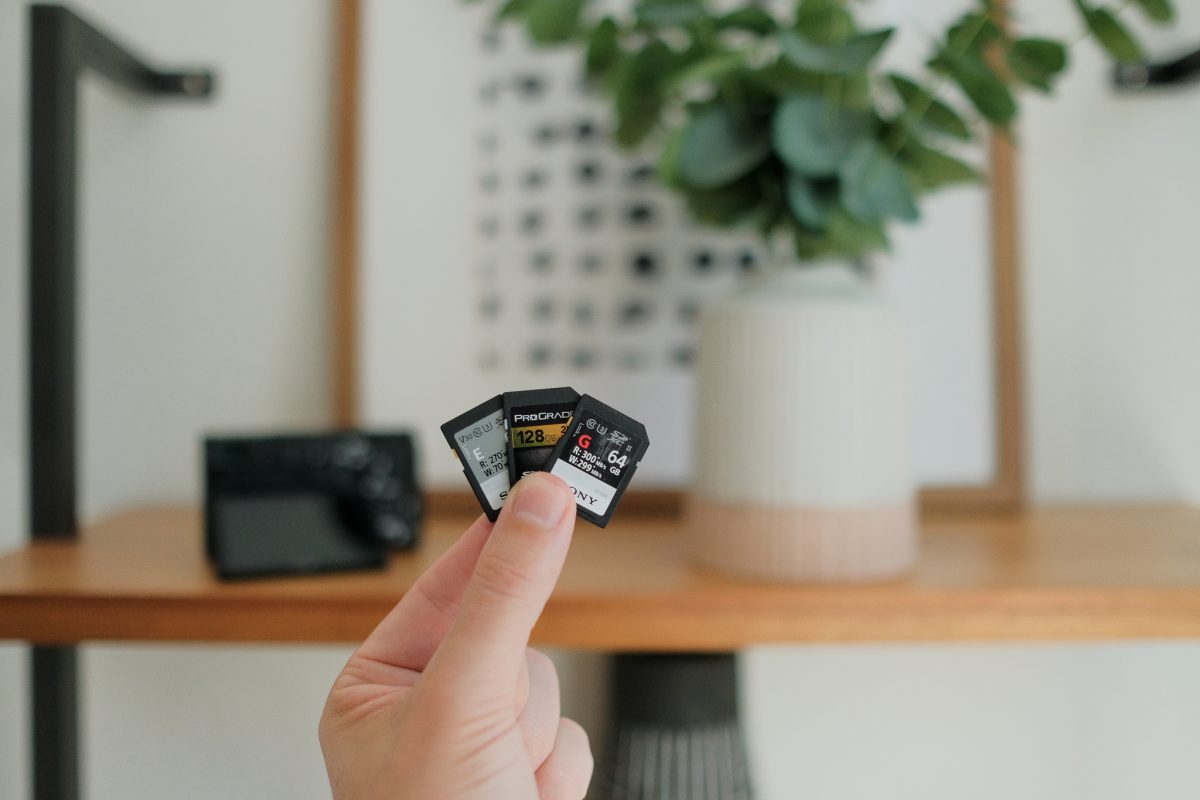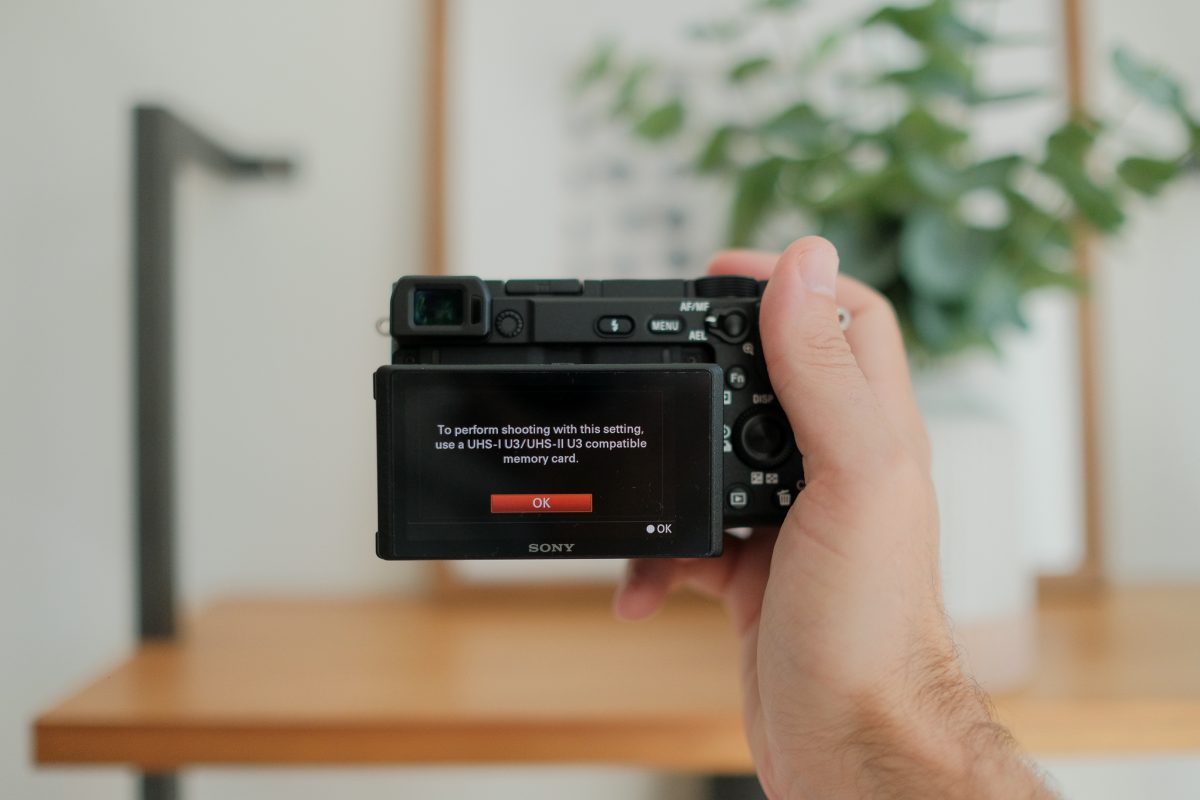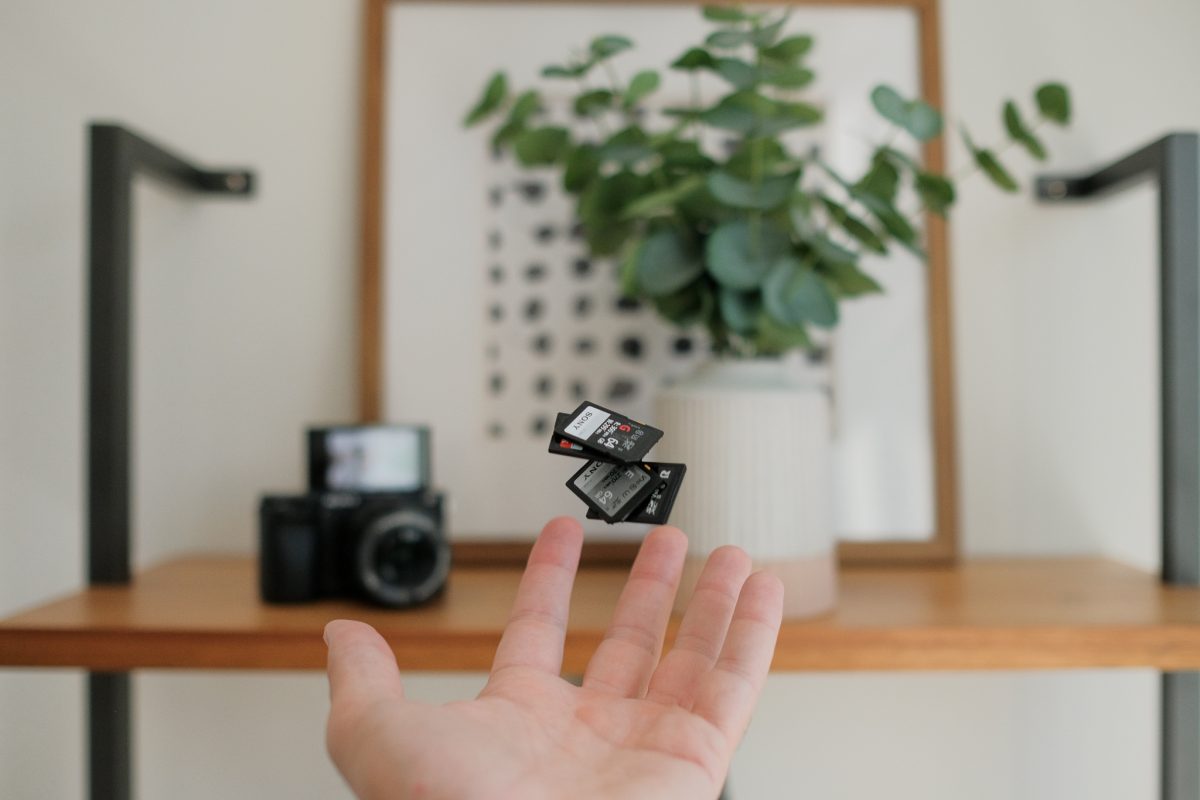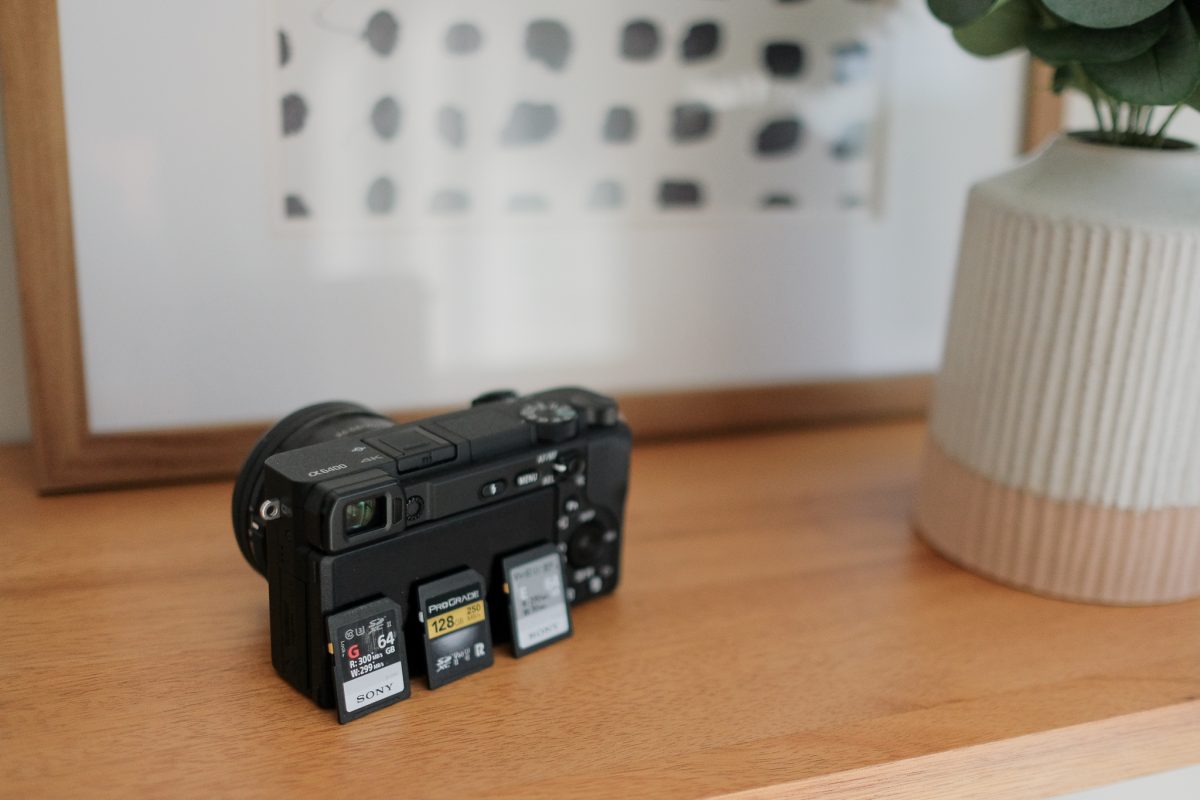Best Sony a6400 Memory Cards for Photography & Video
I’d like to share some thoughts on the best memory cards for the Sony a6400, based on my real-world experiences creating content for YouTube and taking photos both personally and professionally.

Before we jump in, let me answer some frequently asked questions…
SD, SDHC, SDXC, and MicroSD cards with an SD Card Adapter. Just make sure it sports the “U3” label somewhere on the front of the card.
I would say 32GB for photos (roughly 1,250 RAW or 5,350 JPEG images) and 64GB (roughly 105 minutes of 4k footage) for videos.
For YouTubers, filmmakers, and professional photographers, go for 170MB/s or higher. For casual shooters, 95MB/s or higher.
The official kit doesn’t include a memory card. However, some online sellers do include a memory card separately.
No, it has a single memory card slot next to the battery.
No, it doesn’t. It requires a memory card to save photos and videos.
Press the MENU button, navigate to the 5th tab (toolbox icon), then go to the 5th page (Setup5), select “Format” then “Enter.”
Sony a6400 Memory Card Requirements
I need to point out a super important requirement for the Sony a6400.
If you attempt to use a memory card without a UHS “U3” icon, you’ll run into a compatibility error when setting the video image quality to XAVC S 4K. It will say…
“To perform shooting with this setting, use a UHS-I U3/UHS-II U3 compatible memory card.“

So in order to shoot 4K footage, you MUST use a SD card that sports a UHS “U3” icon (a giant U with a smaller 3 inside of it) somewhere on the front of the card.
Beyond this critical requirement, most other considerations come down to whether or not you shoot RAW and how quickly you’d like the data to transfer to your computer.
Best Memory Cards for the Sony a6400
These are the memory cards I’d recommend, based on the types of photos or videos you intend to capture.
4K Video Professional: If you’re a professional filmmaker, filming things like weddings, corporate interviews, and independent films, I would go with the Sony Tough-M 256GB (277MB/s) for fast transfer speeds and plenty of storage.
4K Video YouTuber: If you’re a YouTuber or a video content creator who plans on batch recording (making multiple videos in a single day), then I recommend the ProGrade 128GB (250MB/s) which gives you more than enough storage and quick transfer speeds when importing footage to your computer or laptop.
RAW Professional Photographer: For professional photographers, the SanDisk Extreme Pro 64GB (170MB/s) will give you more than enough space for a full day shoot, plus quick transfer speeds when importing images into Lightroom or Capture One.
Sports & Wildlife Photography: If you photograph sports or wildlife, you’ll be utilizing the continuous (burst) drive mode to take a bunch of images in quick succession. I recommend going with a faster Lexar 64GB (250MB/s) SD card, which will help shorten the buffering time while offering plenty of space for a multi-day shoot.
Casual Photography: For Mom’s, Dad’s and casual snapshots, you don’t need the blazing speed of a high-end card, nor a massive capacity. The SanDisk 32GB (95MB/s) will allow you to take roughly 1,250 RAW or 5,350 JPEG images, which is more than enough for a family trip or multiple weeks of everyday life.
Sony a6400 Memory Card for Video & Filmmaking
If you shoot 4K video with the Sony a6400, you can expect to eat up roughly 100MB for every 10 seconds of video. So if you end up recording 30 minutes of video, it will equate to roughly 18GB of storage.
By the way, if you’re a video creator and are interested in finding out which settings I recommend for shooting high quality video, check out my 🪄 Magic Video Settings for the Sony a6400.

What size memory card should you get for video?
If you batch record your YouTube videos (shoot multiple videos in one sitting) or plan on filming professionally (weddings, events, real estate), then in my opinion, a 128GB card is a must.
If you film mostly YouTube videos and only record one at a time, then a 64GB card is perfectly fine.
Admittedly, during Black Friday 2021, I bought some fast Sony G 64GB cards and wish I had spent the extra money on 128GB cards. When filming multiple videos back-to-back, I’ll end up recording around 80-90GB of data.
What memory card speed is best for video?
In terms of speed, you won’t notice any slowdowns or performance improvements internally when it comes to recording video on the Sony a6400. However, you will notice improvements in transferring footage to your computer, assuming your memory card reader and USB interface can handle the transfer speed of your card.
Without getting too technical, a fast USB-C memory card reader, plugged into an equally fast USB-C port, will allow you to offload your footage MUCH faster when using a memory card with faster transfer speeds.
As a bare minimum, just make sure whatever card you purchase has a UHS “U3” rating on the front of the card. This is required to shoot 4K video.
Sony a6400 Memory Card for Photography
For photography, with the Sony a6400, you can expect RAW images to take up roughly 25MB and JPEG images to take up 6MB of space each. In practical terms, about 40 RAW or 167 JPEG photos for every 1 GB of storage.
To simplify it further. If you’re looking at a 64GB card, you should be able to take around 2,500 RAW or 10,700 JPEG images.

What size memory card should you get for photography?
If you’re a casual shooter, then a 32GB card is more than plenty. If you shoot professionally or are interested in sports and wildlife, where you are taking “bursts” of images, then I would lean more towards a 64GB card.
What memory card speed is best for photography?
When it comes to speed, I tested my super fast Sony G 64GB card (300MB/s) against an entry level SanDisk 32GB card (95MB/s) and an intermediate SanDisk 64GB Extreme Pro (170MB/s).
I can tell you that there is very little difference in single shot-to-shot speed or when playing back images.
For continuous bursts (sports and wildlife), where you take a bunch of shots in quick succession, the faster cards can shave off anywhere from 2 to 15 seconds as the Sony a6400 clears its buffer.
So, in the most extreme cases, a faster card will save you a few extra seconds and clear the buffer a bit faster.
When it comes to transfer speeds, faster cards paired with equally fast USB-C memory card readers plugged into fast USB-C ports can dramatically reduce the amount of time it takes to transfer images.
In reality though, most people won’t mind waiting an extra minute or two for a slower card to finish transferring.
So I’d say for photography, your requirements are less than what’s required for video. Most casual shooters, who don’t record a lot of video, can go with an entry-level 32GB (95MB/s) UHS-U3 card and be perfectly happy.